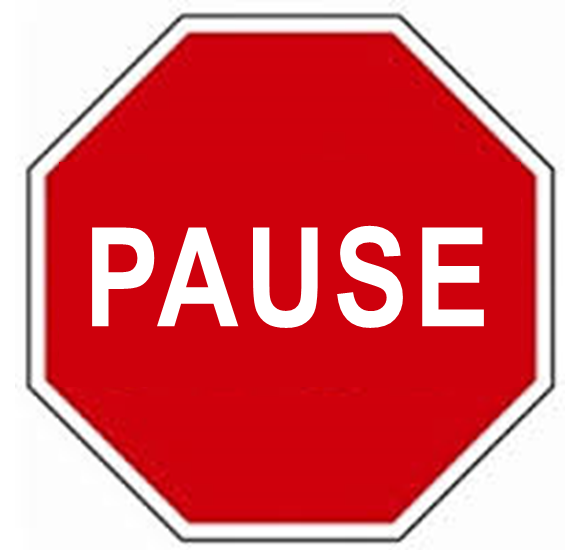Don’tyouhateitwhenspeakersneverpause?
Pausing is to speaking as punctuation is to writing. Both enhance comprehension. Pausing is perhaps even more important because a live audience can’t go back and re-listen the same way a reader can go back and re-read.
Pausing increases comprehension in several ways. Pausing:
- Reduces the overall rate of speaking
- Gives the audience time to reflect
- Clearly signals beginnings and endings of thoughts
- Indicates importance of concepts
Not only are there benefits to the audience, there are benefits to you, the speaker!
Pausing gives you time to breathe and think and can be used instead of filler words. Instead of ah or um, just pause!
When should you pause?
Before you speak. Before you utter your first word, look at your audience, make eye contact with a few individuals. It’s a simple way to get their attention and to allow yourself to mentally review your first line. You probably need to hold the pause about a second longer than feels comfortable.
Naturally, as you would in conversation. Shorter pauses where you would have commas, medium pauses at the end of a sentence and longer pauses at the end of a longer section (such as a story, or before you move on to another point). I have noticed that people who have over-practiced from an entirely written-out speech often tend to speak without conversational pauses. Some pause too long, but most don’t pause long enough.
Before and after important or difficult words or concepts (shorter pause before, longer pause after). Your pause is like underlining or italicizing the concept. You just do it before and after the word when you speak. You just do it (very short pause) before (short pause) and (very short pause) after (short pause) the word when you speak. Audio of previous sentence:
Before and after a punch line. The pause, a 1- 2 second pause before the punch line, allows you to misdirect the thinking of the audience, so that the punch line is a surprise. The old one-liner, “Take my wife . . . please” was funny because in the pause, audiences expected something like “for example.” The word “please” was unexpected. After a punch line pause long enough for people to laugh. Don’t step on the laughter and cut it short. If your line wasn’t that funny, well, just move on.
After a rhetorical question. Even though you don’t expect an answer with a rhetorical question, give your audience time to answer it in their own minds. Not having a significant pause and rushing on to the next point is very common. If you don’t pause, you may frustrate your audience and you may lose some who are still briefly reflecting on the question. Try a 3 second pause.
After changing a visual (e.g. after advancing a slide in a presentation). People need a little time to soak in a visual. The more complex, the more time. If anything is written on the slide, allow time for them to read it before you speak. People don’t read and listen very well at the same time.
How can you improve your pausing?
- Mark your speech with pauses. Use ellipsis (. . .), slashes or even a tiny stop sign for longer pauses.
- Practice pausing, recording yourself. Listen to the recording. Can you pause longer? Most people don’t pause long enough.
Silence is golden! Do you have tips on effective pausing?

